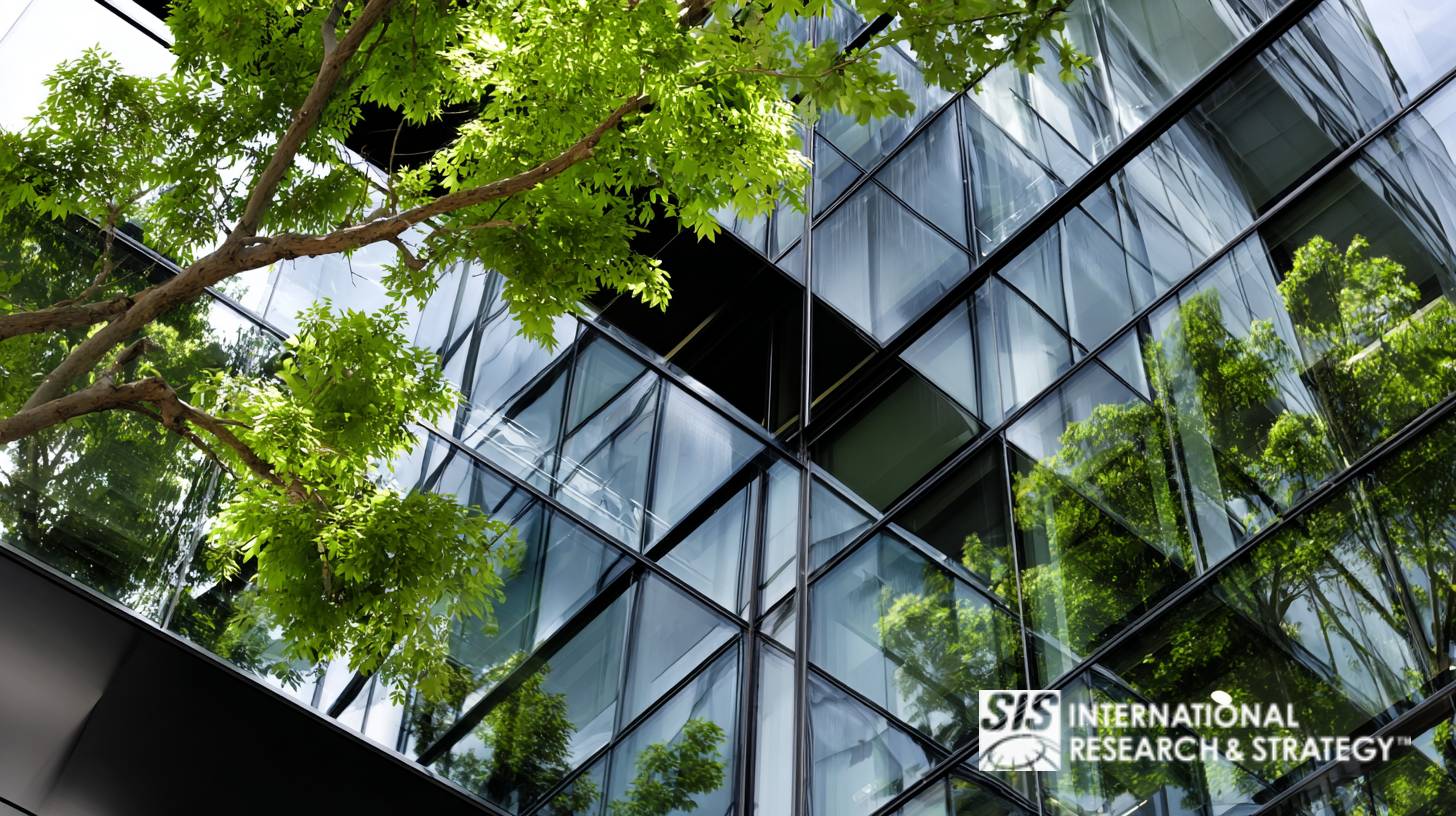Green Building Materials Market Research

Green building materials are sustainable, easy on the environment, and energy-efficient. We use these materials to construct buildings with minimal environmental impact. They reduce energy consumption and promote healthy living. Green building materials come from renewable resources or recycled materials. They are long-lasting and low-maintenance.
Examples of green building materials include:
- Wood: harvested from certified forests
- Bamboo: renewable material that can replace wood in construction
- Recycled steel: made from recycled materials that have a lower carbon footprint
- Recycled plastic: plastic made from recycled materials such as PET bottles
- Natural insulation: made from materials like wool, cotton, and cellulose
- Low-emitting flooring: made from low volatile organic compounds (VOC) materials. Examples are bamboo, cork, and linoleum
- Solar panels: solar panels that produce renewable energy and reduce energy consumption
- Water-efficient fixtures that reduce water usage, such as low-flow toilets, showerheads, and faucets.
Using green building materials is essential to creating sustainable, energy-efficient buildings. Another great thing about these materials is that they keep your impact on the environment minimal.
Why are Green Building Materials Important?

Green building materials are essential. They help to create sustainable buildings that are easy on the environment. They are also healthier for occupants. Here are some more of the critical reasons why green building materials are essential:
Green building materials are sustainable and have a minimal environmental impact. They are often made from renewable, recycled, or natural resources.
Companies must harvest them in an environmentally responsible way. This process helps reduce waste, conserve natural resources, and decrease pollution.
Another key point is that many green building materials are energy-efficient. As a matter of fact, they help to reduce energy consumption and lower the carbon footprint of buildings. For example, solar panels can generate renewable energy. Natural materials insulation can further reduce heating and cooling costs.
Green building materials can contribute to healthier living environments. They are often made from non-toxic materials. In other words, these materials are less likely to release harmful chemicals into the air. This feature can improve indoor air quality. It also reduces the risk of health problems associated with poor indoor air quality.
While green building materials may be more expensive upfront, they can save money in the long run. For example, energy-efficient materials can help to reduce utility bills. Durable materials can reduce maintenance costs over time.
The use of green building materials can benefit property owners. It allows their structures to achieve green building certification. For example, they can become compliant with LEED (Leadership in Energy and Environmental Design). Furthermore, green building certification can increase property value and improve marketability. It also shows a commitment to sustainability.
In short, the use of green building materials is essential. It spurs the creation of sustainable, energy-efficient buildings with minimal environmental impact. It also promotes healthier living environments and cost savings.
Key Job Titles

Here are some key job titles related to green building materials:
- Sustainable Design Architect: responsible for designing sustainable, energy-efficient, and environmentally friendly buildings. They work with clients and engineers, as well as contractors. Together they create structures designed to meet green building certification standards.
- LEED Accredited Professional: LEED is a green building certification program. LEED Accredited Professionals (AP) have passed the LEED AP exam. They have deeply understood green building practices, principles, and standards.
- Green Building Consultant: provide guidance and advice to clients. They help them design, construct, and maintain sustainable, energy-efficient buildings. The consultant may provide assessments of existing structures or recommend green building materials. They also help clients achieve green building certification.
- Sustainability Coordinator: manage and implement sustainability initiatives within organizations. For example, they develop sustainability plans and track energy and resource usage. They also promote sustainable practices.
- Environmental Engineer: ensure that buildings have a minimal environmental impact. They may work on water conservation, waste management, and energy efficiency projects.
- Green Building Materials Manufacturer: produces environmentally friendly building materials. For example, they make recycled steel, natural insulation, and low-emitting flooring. They work to create materials that are sustainable and energy-efficient. They ensure that these materials are healthy for building occupants.
- Energy Auditor: assess the energy efficiency of buildings. They also provide recommendations for reducing energy consumption. They may inspect facilities, analyze energy bills, and recommend energy-efficient technologies and practices.
These are only a few job titles related to green building materials. Many other professions and job titles play a role in creating green buildings.
Why Businesses Need Green Building Materials
Businesses need green building materials for several reasons. Again, cost savings come into play. Green building materials can help companies to save money in the long run. Energy-efficient materials, such as low-emitting insulation and LED lighting, can reduce energy costs. Moreover, durable materials can reduce maintenance costs over time.
Green buildings are becoming more popular among consumers. The modern consumer tends to show concern for the environment. Businesses that use green building materials can differentiate themselves from competitors. For instance, they can appeal to customers who value sustainability.
Many local and state governments have established building codes and regulations. Some of these laws relate to energy efficiency and environmental sustainability. Businesses that use green building materials can follow these regulations and avoid penalties.
Green building materials can contribute to a healthier work environment for employees. For example, low-VOC paint and natural insulation can improve indoor air quality. They can also reduce the risk of health problems associated with poor indoor air quality.
Key Success Factors
Green building materials must be sustainable and have a minimal environmental impact. In addition, manufacturers should use renewable resources or recycled materials. Or they can at least use natural materials harvested in an environmentally responsible way. They should also have a long lifespan and be easy to recycle or repurpose at the end of their useful life.
Many green building materials are energy-efficient. They help to reduce energy consumption and lower the carbon footprint of buildings. These materials should be able to insulate buildings. Thus, they can reduce the need for heating, cooling, and lighting.
Green building materials should be durable and able to withstand the elements. They should also resist wear and tear over time. By the same token, these materials should be resistant to moisture, pests, and decay. They must also maintain their structural integrity over a long period.
Green building materials may be more expensive upfront. But they should be cost-effective over their lifespan. They should be able to save money through energy efficiency. Users will also enjoy reduced maintenance costs and improved occupant health and productivity.
Safety and Sustainability

Green building materials should be safe for the environment and the building occupants. Manufacturers should create them from non-toxic materials. These materials should not release harmful chemicals into the air. They should also be easy to maintain and clean to prevent the buildup of mold and other allergens.
A reputable third-party organization should certify your green building materials. An example of such an organization is the Forest Stewardship Council (FSC). Or you can have Cradle to Cradle (C2C) do the certification. This step ensures that your building materials meet sustainability and environmental standards.
In short, the success of green building materials depends on their sustainability. They must also be energy efficient, durable, and cost-effective. These materials should meet health and safety standards, and you should certify them. Are you selecting green building materials for your projects? Consider these factors before making your final selection.
About Green Building Materials Market Research
Is your company looking to enter the Green Building Materials market? You must conduct Quantitative and Qualitative Market Research in detail. Research provides insight into your competitors, market, products, and customers. You’ll need to set up Focus Groups coupled with Surveys and Interviews. You’ll also need UX Market Research. It will tell you how your product fits people’s wants, needs, and abilities.
SIS International offers all these research options. We also provide Strategy Market Research, Competitive Analysis, and Market Entry Research. SIS does Market Opportunity Research and Market Sizing Research. We can help you develop a winning Go to Market Strategy. Contact us today for a consultation!

